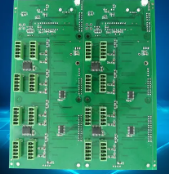So far, "tin" is still the best soldering material, and the composition of lead-free solder paste is also based on "tin", but the "lead" is removed.
The melting point of pure tin is as high as 231.9°C. In fact, it is not suitable for general PCBA assembly soldering. In other words, some electronic parts are still difficult to meet such high temperature requirements. Therefore, the solder in the circuit board assembly must be made of "tin" as the main material. Then add other alloy solders, such as silver (Ag), indium (In), zinc (Zn), antimony (Sb), copper (Cu), bismuth (Bi)... and other trace metals to reduce its melting point to achieve The main purpose of mass production and energy saving.
Do you know the purpose of adding these trace metals in solder?
The secondary purpose of adding other metals is to improve the special requirements of solder joints, such as improving the toughness and strength of solder to obtain ideal mechanical, electrical and thermal properties.
Therefore, when the content of "lead" was not regulated, the composition of the solder paste was mostly tin-lead Sn63Pd37, and its eutectic point could be drastically reduced to 183°C. The current lead-free solder paste, for example, adding a little silver When SAC305 (tin-silver-copper) is made with copper, its eutectic point can be reduced to 217°C, while adding a little copper and nickel to make SCN (tin-copper-nickel), its eutectic point becomes 227°C, all of which are better than pure The melting point of tin is low.

Why does the eutectic point of two metals with high melting point decrease greatly after being mixed together in a certain ratio?
Up to now, "tin" is still the best soldering material for electronic parts in the world, and other metals that are usually used in conjunction with tin include: silver (Ag), indium (In), zinc (Zn), Antimony (Sb), copper (Cu) and bismuth (Bi)...etc. The following is a brief description of the characteristics and uses of the trace metals that may be contained in these solder pastes:
Silver (Ag):
Generally speaking, adding "silver (Ag)" to the solder paste is to improve the wettability of the solder, and to strengthen the solder joint strength and improve the fatigue resistance. The addition of "silver" is good for the product to pass the hot and cold cycle test, but if the "silver" content is too high (more than 4% by weight), the solder joints will become brittle instead.
Indium (In):
Indium (In) may be the element with the lowest melting point found in metals that can form an alloy with tin. The lowest temperature of indium tin (52In48Sn) alloy can reach 120°C, and 77.2Sn/20In/2.8Ag The melting point of the alloy is even lower, only 114°C. Low-temperature solder is a better choice in certain special occasions, but it seems not suitable for the entire electronics assembly industry at present. Indium has very good physical and wetting properties, but indium is very rare, so it is very expensive and does not have the possibility of large-scale application.
Zinc (Zn):
"Zinc (Zn)" is a very common mineral, so the price is very cheap, almost much different from the price of lead. Although the melting point of zinc-tin alloy is lower than that of pure tin (91.2Sn8.8Zn melting point 200°C), the difference is not so obvious, and zinc has a very big shortcoming, it will react quickly with oxygen (O2) in the air., A layer of stable oxide is formed, which hinders the wettability of solder. In the wave soldering process, this result will produce a large amount of dross and even affect the quality of soldering. Therefore, the modern welding process of zinc alloys is gradually excluded.
Bismuth (Bi):
"Bi" is also very obvious in reducing the melting point of tin alloys. The melting point of Sn42Bi58 is as low as 138°C, while the melting point of Sn64Bi35Ag1 is only 178°C. If it is a tin/lead/bismuth alloy The melting point of bismuth can be as low as 96 degree Celsius. "Bismuth" has very good wetting properties and better physical properties. After lead-free solder became popular, its demand has increased significantly, and it is mainly used in certain PCB products that cannot be soldered at high temperatures. For example, some lighting uses LEDs soldered on a flexible board.
The lack of solder joint strength and brittleness of tin-bismuth alloy is its biggest disadvantage, that is, its reliability is not good. Therefore, some people add a small amount of "silver" to improve the solder joint strength and fatigue resistance. Unfortunately, its strength is still unsatisfactory. Special attention must be paid when choosing this kind of low temperature solder alloy, or it can be supplemented with glue to strengthen its impact resistance and fatigue resistance.
Nickel (Ni):
Adding "Nickel (Ni)" to the solder is not to lower the melting point. In the nickel-tin alloy ratio, 100% pure tin has the lowest melting point. The reason why a small amount of "nickel" is added to the solder is purely to suppress PCB The dissolution of the copper substrate during the soldering process, especially in the PCB wave soldering process (Wave Soldeirng) to prevent the occurrence of copper biting on the OSP board. Generally, it is recommended to use a tin rod with a "nickel" SnCuNi (SCN) alloy ( Solder-bar).
Copper (Cu):
Adding a small amount of "copper (Cu)" to the solder paste can strengthen the rigidity of the solder, so it can increase the strength of the solder joint. A small amount of copper can also reduce the corrosion of the solder on the soldering iron tip. The content of copper in the solder paste is usually required The weight ratio is within 1%, if it exceeds 1%, the welding quality may be compromised.